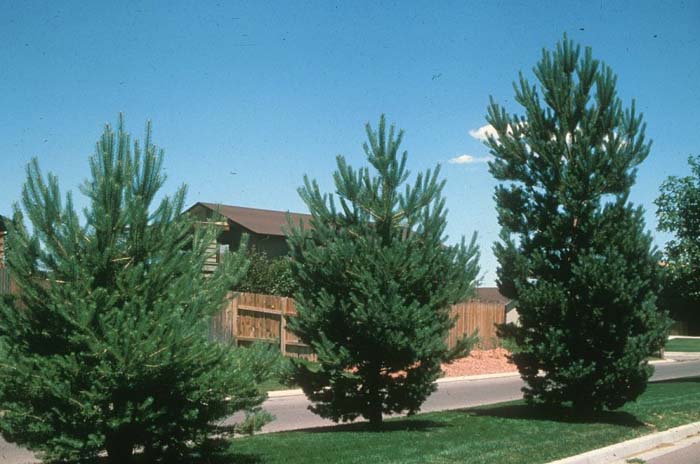| Botanical Name: Pinus sylvestris | Add |
| Common Name: Scot's Pine |

-
Anatomy
-
Culture
-
Design
Plant Type
Tree, Conifer
Height Range
25-40', 40-60'
Flower Color
n/a
Flower Season
n/a
Leaf Color
Green, Blue Green, Grey Green, Light Green, Yellow Green
Bark Color
Red
Fruit Color
Black, Brown
Fruit Season
Winter, Fall
Sun
Full
Water
Very Low, Low, Medium
Growth Rate
Moderate
Soil Type
Sandy, Clay, Loam, Rocky, Unparticular
Soil Condition
Average, Rich, Poor, Well-drained, Moist, Dry
Soil pH
Acid, Neutral
Adverse Factors
n/a
Design Styles
Japanese, Mediterranean, Ranch, Seascape, Spanish
Accenting Features
Silhouette
Seasonal Interest
n/a
Location Uses
Background, Park, Roadside, With Rocks
Special Uses
Screen, Mass Planting, Wind Break
Attracts Wildlife
n/a
Information by: J.J. Neilson Arboretum
Photographer: Linda Engstrom
Photographer: Linda Engstrom
-
Description
-
Notes
Some features of the sylvestris include its stout, twisted needles and egg-shaped cones. Its trunk is often crocked, and the bark, which peels in irregular plates,is a purple-grey color which changes to orange and flanking toward the top. Positive growth will result from planting in acidic, well-drained soil. It is best to destroy severly beetle-ridden trees.
While it is a very hardy tree, it grows poorly in desert areas. In cold winters, it often turns a red-brown color (from which it will recover). Although it is wind-resistant, the pine is intolerant of much shade.